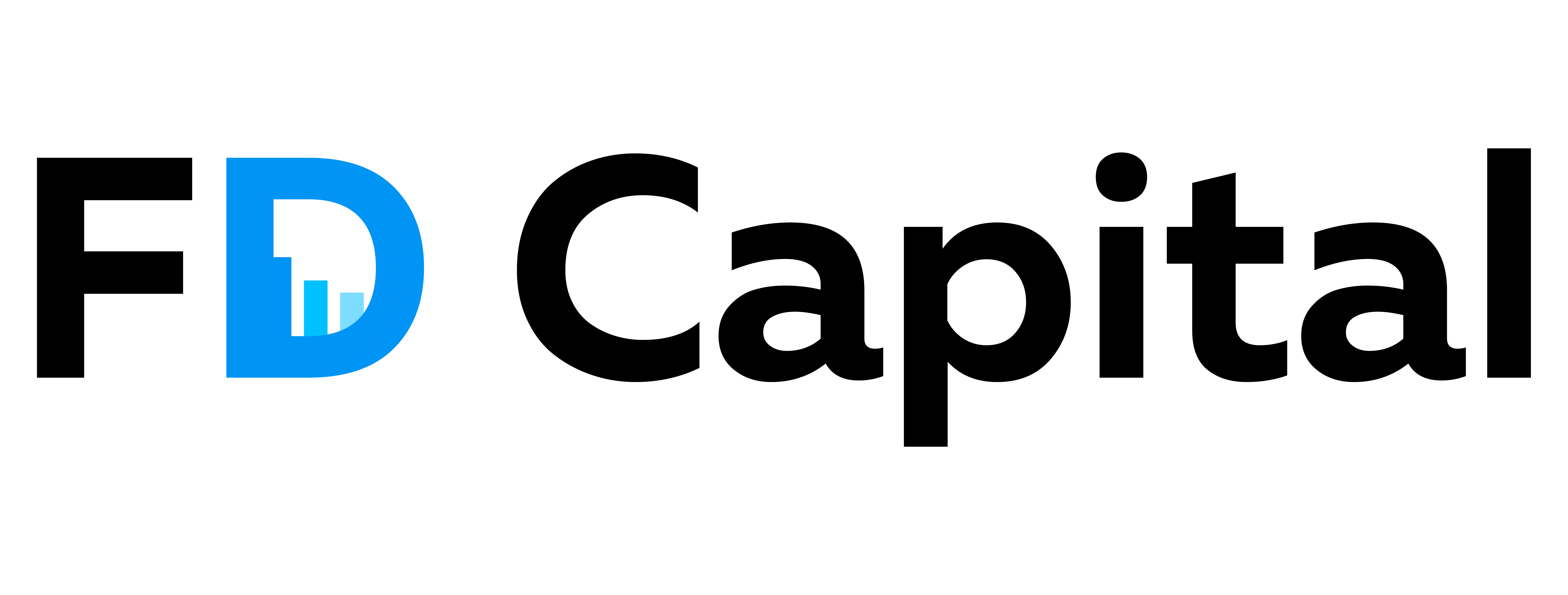The Future of Financial Reporting: Eliminating the Year-End Close

The Future of Financial Reporting: Eliminating the Year-End Close
Introduction
Overview of traditional year-end close processes
The traditional year-end close process is a cornerstone of financial reporting, marking the culmination of a company’s fiscal year. This process involves a comprehensive review and reconciliation of financial records, ensuring that all transactions are accurately recorded and that financial statements reflect the true financial position of the business. Typically, the year-end close includes tasks such as adjusting journal entries, reconciling accounts, and preparing financial statements. These activities are often time-consuming and labor-intensive, requiring significant coordination across various departments within an organization. Despite its critical role in financial reporting, the traditional year-end close is often seen as a bottleneck, delaying the availability of crucial financial information and placing a heavy burden on finance teams.
Importance of financial reporting in business
Financial reporting is a vital function in any business, providing stakeholders with essential insights into the company’s financial health and performance. Accurate and timely financial reports are crucial for decision-making, enabling management to assess the company’s profitability, liquidity, and solvency. Investors, creditors, and regulatory bodies rely on these reports to make informed decisions regarding investments, lending, and compliance. Furthermore, financial reporting fosters transparency and accountability, building trust with stakeholders and enhancing the company’s reputation. As businesses operate in an increasingly dynamic and competitive environment, the demand for real-time financial information is growing, challenging traditional reporting processes and prompting a reevaluation of the year-end close.
The Future of Financial Reporting: Eliminating the Year-End Close
The Traditional Year-End Close Process
The traditional year-end close process is a time-consuming and labor-intensive task that involves reconciling accounts, preparing financial statements, and ensuring compliance with regulatory requirements. This process often requires significant manual effort, coordination across departments, and can lead to increased stress and potential errors due to tight deadlines.
Challenges of the Year-End Close
Time-Consuming Nature
The year-end close process can take weeks or even months to complete, diverting resources from other strategic activities. This extended timeline can delay the availability of financial information, impacting decision-making and strategic planning.
Risk of Errors
The manual nature of the year-end close process increases the risk of errors, which can lead to inaccurate financial reporting. Errors can arise from data entry mistakes, miscommunications between departments, or misinterpretations of financial data.
Resource Intensive
The year-end close requires significant human resources, often necessitating overtime work and the involvement of multiple departments. This can lead to employee burnout and increased operational costs.
Technological Advancements in Financial Reporting
Automation and AI
Automation and artificial intelligence (AI) are transforming financial reporting by streamlining processes and reducing the need for manual intervention. These technologies can automate routine tasks, such as data entry and reconciliation, allowing finance teams to focus on more strategic activities.
Real-Time Data Processing
Real-time data processing enables organizations to access up-to-date financial information, facilitating more timely and informed decision-making. This capability reduces the reliance on periodic reporting cycles and supports continuous financial monitoring.
Cloud-Based Solutions
Cloud-based financial reporting solutions offer scalability, flexibility, and accessibility, allowing organizations to manage their financial data more efficiently. These solutions support collaboration across departments and geographies, enhancing the accuracy and timeliness of financial reporting.
Benefits of Eliminating the Year-End Close
Improved Accuracy and Timeliness
By eliminating the year-end close, organizations can achieve more accurate and timely financial reporting. Continuous monitoring and real-time data processing reduce the risk of errors and provide stakeholders with up-to-date financial information.
Enhanced Decision-Making
Access to real-time financial data supports more informed decision-making, enabling organizations to respond quickly to changing market conditions and opportunities. This agility can provide a competitive advantage in today’s fast-paced business environment.
Cost and Resource Efficiency
Eliminating the year-end close can lead to significant cost savings by reducing the need for overtime work and minimizing the risk of errors. Organizations can reallocate resources to more strategic initiatives, enhancing overall efficiency and productivity.
Challenges and Considerations
Implementation Costs
Transitioning to a continuous financial reporting model may require significant upfront investment in technology and training. Organizations must carefully evaluate the costs and benefits to ensure a successful implementation.
Change Management
Eliminating the year-end close requires a cultural shift within the organization. Change management strategies are essential to ensure buy-in from stakeholders and to address potential resistance to new processes and technologies.
Regulatory Compliance
Organizations must ensure that their continuous financial reporting processes comply with regulatory requirements. This may involve working closely with regulators and auditors to develop new reporting standards and practices.
The Evolution of Financial Reporting
Historical perspective on financial reporting practices
Financial reporting has undergone significant transformations since its inception, evolving in response to the changing needs of businesses, investors, and regulatory bodies. In the early days, financial reporting was primarily a tool for internal management, with limited external disclosure. The Industrial Revolution marked a pivotal shift, as businesses expanded and the need for external capital grew. This period saw the emergence of more structured financial statements, designed to provide potential investors with insights into a company’s financial health.
The early 20th century brought about the establishment of standardized accounting principles, driven by the need for consistency and comparability in financial reporting. The formation of organizations such as the American Institute of Accountants (now the AICPA) and the subsequent development of Generally Accepted Accounting Principles (GAAP) in the United States laid the groundwork for modern financial reporting practices. These standards aimed to ensure that financial statements were prepared with a high degree of reliability and transparency, fostering trust among investors and stakeholders.
The mid-20th century saw further advancements with the creation of the International Accounting Standards Committee (IASC) in 1973, which sought to harmonize accounting standards globally. This initiative eventually led to the development of International Financial Reporting Standards (IFRS), which have been adopted by many countries worldwide. The adoption of IFRS marked a significant step towards global standardization, facilitating cross-border investment and enhancing the comparability of financial statements across different jurisdictions.
Technological advancements and their impact
The advent of technology has revolutionized financial reporting, transforming it from a manual, paper-based process to a highly automated and digital one. The introduction of computers in the latter half of the 20th century enabled the automation of many accounting tasks, significantly reducing the time and effort required to prepare financial statements. This shift not only improved efficiency but also enhanced the accuracy and reliability of financial data.
The rise of the internet and digital communication in the late 20th and early 21st centuries further accelerated the evolution of financial reporting. Companies began to leverage online platforms to disseminate financial information, making it more accessible to a broader audience. This increased transparency and allowed stakeholders to access real-time financial data, facilitating more informed decision-making.
In recent years, the integration of advanced technologies such as artificial intelligence (AI), machine learning, and blockchain has further transformed financial reporting. AI and machine learning algorithms are now being used to analyze vast amounts of financial data, identify patterns, and generate insights that were previously unattainable. These technologies have the potential to automate complex accounting tasks, reduce human error, and enhance the predictive capabilities of financial reporting.
Blockchain technology, with its decentralized and immutable nature, offers the potential to revolutionize the way financial transactions are recorded and verified. By providing a transparent and tamper-proof ledger, blockchain can enhance the integrity and trustworthiness of financial data, reducing the risk of fraud and errors.
The evolution of financial reporting continues to be driven by technological advancements, with the potential to eliminate traditional practices such as the year-end close. As technology continues to advance, financial reporting is likely to become even more real-time, accurate, and insightful, providing stakeholders with a clearer picture of a company’s financial health.
Challenges of the Year-End Close
Time-consuming and resource-intensive nature
The year-end close process is notoriously time-consuming and resource-intensive, often requiring significant effort from finance teams to ensure accuracy and compliance. This period demands meticulous attention to detail as organizations compile and verify financial data, reconcile accounts, and prepare financial statements. The complexity of these tasks can lead to extended working hours and increased stress for finance professionals, who must balance the need for precision with tight deadlines.
The sheer volume of transactions that need to be reviewed and reconciled can be overwhelming, especially for large organizations with complex financial structures. This often necessitates the involvement of multiple departments and stakeholders, further complicating coordination and communication efforts. The reliance on manual processes and spreadsheets can exacerbate these challenges, as they are prone to errors and can be difficult to manage at scale.
Common issues and inefficiencies
Several common issues and inefficiencies can arise during the year-end close process, hindering its effectiveness and accuracy. One major challenge is the lack of real-time data, which can lead to delays and inaccuracies in financial reporting. Without up-to-date information, finance teams may struggle to identify discrepancies and make necessary adjustments in a timely manner.
Data silos within organizations can also pose significant obstacles, as disparate systems and databases may not communicate effectively with one another. This can result in duplicated efforts, inconsistencies, and errors that require additional time and resources to resolve. Furthermore, the reliance on manual data entry and reconciliation processes increases the risk of human error, which can compromise the integrity of financial reports.
Another common inefficiency is the inadequate integration of financial systems and tools, which can lead to fragmented workflows and hinder collaboration among team members. This lack of integration can make it difficult to track progress, identify bottlenecks, and ensure that all necessary tasks are completed on schedule. As a result, finance teams may find themselves scrambling to meet deadlines, which can further exacerbate stress and increase the likelihood of errors.
The Case for Continuous Accounting
Definition and principles of continuous accounting
Continuous accounting is a modern approach to financial management that emphasizes real-time data processing and analysis, allowing for ongoing financial reporting and decision-making. Unlike traditional accounting methods that rely on periodic, often monthly or yearly, financial closes, continuous accounting integrates financial tasks into daily operations. This approach leverages automation, advanced analytics, and cloud-based technologies to streamline processes and provide a more accurate and timely view of an organization’s financial health.
The principles of continuous accounting revolve around three core concepts: automation, integration, and real-time reporting. Automation reduces manual effort and errors by using software to handle repetitive tasks such as data entry and reconciliation. Integration ensures that financial data flows seamlessly across different systems and departments, breaking down silos and fostering collaboration. Real-time reporting provides stakeholders with up-to-date financial information, enabling more informed decision-making and strategic planning.
Benefits over traditional year-end close
Continuous accounting offers several advantages over the traditional year-end close process. One of the most significant benefits is the reduction in time and effort required to close the books. By automating routine tasks and spreading them throughout the year, organizations can eliminate the need for a frantic, resource-intensive year-end close. This not only reduces stress on accounting teams but also allows them to focus on more strategic activities.
Another key benefit is improved accuracy and reliability of financial data. Continuous accounting minimizes the risk of errors by automating data entry and reconciliation processes. This leads to more accurate financial statements and reduces the likelihood of costly restatements or audits. Real-time access to financial data also enhances transparency and accountability, as stakeholders can monitor financial performance and address issues as they arise.
Continuous accounting also supports better decision-making by providing timely insights into financial performance. With access to real-time data, management can make informed decisions quickly, respond to market changes, and capitalize on opportunities. This agility is crucial in today’s fast-paced business environment, where delays in financial reporting can result in missed opportunities or competitive disadvantages.
Finally, continuous accounting fosters a culture of continuous improvement within the finance function. By regularly reviewing and optimizing processes, organizations can identify inefficiencies and implement best practices, leading to ongoing enhancements in financial management and reporting. This proactive approach not only improves the quality of financial information but also contributes to the overall success and sustainability of the organization.
Technology Enablers
Role of automation and artificial intelligence
Automation and artificial intelligence (AI) are revolutionizing the landscape of financial reporting by streamlining processes and reducing the need for manual intervention. Automation tools can handle repetitive tasks such as data entry, reconciliation, and report generation, which traditionally consumed significant time and resources during the year-end close. By automating these processes, organizations can achieve greater efficiency and accuracy, minimizing the risk of human error.
AI, on the other hand, enhances the capabilities of automation by introducing intelligent decision-making and predictive analytics. Machine learning algorithms can analyze vast amounts of financial data to identify patterns, trends, and anomalies that might be missed by human analysts. This capability allows for proactive financial management, enabling organizations to address potential issues before they escalate. AI-driven insights can also facilitate more informed strategic decision-making, as they provide a deeper understanding of financial performance and potential future scenarios.
Cloud computing and real-time data analytics
Cloud computing is a critical enabler for the future of financial reporting, offering scalable and flexible solutions that support real-time data access and collaboration. By leveraging cloud-based platforms, organizations can centralize their financial data, making it accessible to stakeholders across different locations and departments. This accessibility ensures that financial information is always up-to-date, facilitating continuous monitoring and analysis.
Real-time data analytics, powered by cloud computing, allows organizations to move away from the traditional periodic reporting model towards a more dynamic and continuous approach. With real-time analytics, financial teams can generate insights on demand, providing a current view of the organization’s financial health. This capability not only supports more agile decision-making but also enhances transparency and accountability, as stakeholders can access and review financial data at any time.
The integration of cloud computing with advanced analytics tools also enables the automation of complex financial processes, such as forecasting and budgeting. By utilizing real-time data, organizations can create more accurate and responsive financial models, adapting quickly to changing market conditions and business needs.
Implementation Strategies
Steps to transition from year-end close to continuous accounting
Assess Current Processes and Technology
Begin by conducting a comprehensive assessment of your current financial reporting processes and technology infrastructure. Identify bottlenecks, inefficiencies, and areas where automation can be introduced. Evaluate the existing accounting software to determine if it supports real-time data processing and continuous reporting.
Define Objectives and Metrics
Clearly define the objectives of transitioning to continuous accounting. Establish key performance indicators (KPIs) to measure the success of the implementation. These objectives might include reducing the time spent on closing processes, improving data accuracy, and enhancing decision-making capabilities.
Develop a Roadmap
Create a detailed roadmap that outlines the steps necessary to transition to continuous accounting. This roadmap should include timelines, resource allocation, and milestones. Prioritize tasks based on their impact and feasibility, ensuring that the transition is manageable and sustainable.
Invest in Technology and Automation
Invest in advanced accounting software and automation tools that facilitate real-time data processing and reporting. Implement cloud-based solutions that offer scalability and flexibility. Automation can help streamline repetitive tasks, reduce errors, and free up resources for more strategic activities.
Implement Incremental Changes
Adopt a phased approach to implementation by introducing incremental changes. Start with less complex processes and gradually expand to more intricate areas. This approach allows for testing and refinement, minimizing disruptions and ensuring a smoother transition.
Monitor and Adjust
Continuously monitor the progress of the implementation against the defined objectives and KPIs. Gather feedback from stakeholders and make necessary adjustments to the processes and technology. Regularly review and update the roadmap to reflect changes in business needs and technological advancements.
Change management and training considerations
Engage Stakeholders Early
Engage key stakeholders early in the process to gain their support and buy-in. Clearly communicate the benefits of continuous accounting and how it aligns with the organization’s strategic goals. Involve stakeholders in the planning and decision-making process to foster a sense of ownership and commitment.
Develop a Comprehensive Training Program
Design a comprehensive training program to equip employees with the necessary skills and knowledge to operate in a continuous accounting environment. Tailor the training to different roles and responsibilities, ensuring that all team members understand the new processes and technology.
Foster a Culture of Continuous Improvement
Promote a culture of continuous improvement by encouraging employees to embrace change and innovation. Create an environment where feedback is valued and used to drive enhancements in processes and technology. Recognize and reward efforts that contribute to the successful implementation of continuous accounting.
Address Resistance to Change
Anticipate and address resistance to change by understanding the concerns and apprehensions of employees. Provide clear communication about the reasons for the transition and the benefits it will bring. Offer support and resources to help employees adapt to the new processes and technology.
Establish Support Systems
Set up support systems to assist employees during the transition. This could include help desks, online resources, and peer support networks. Ensure that employees have access to the necessary tools and resources to perform their tasks effectively in the new environment.
Case Studies and Success Stories
Examples of companies that have successfully eliminated the year-end close
Company A: Real-Time Financial Reporting Pioneer
Company A, a global technology firm, embarked on a journey to eliminate the traditional year-end close by implementing a real-time financial reporting system. By leveraging advanced cloud-based accounting software and integrating AI-driven analytics, they were able to continuously update their financial data. This shift allowed them to maintain an up-to-date financial position at any given time, eliminating the need for a cumbersome year-end process. The transition not only improved accuracy but also enhanced decision-making capabilities, as executives could access real-time financial insights.
Company B: Retail Giant’s Continuous Close
A leading retail giant, Company B, adopted a continuous close approach to financial reporting. By automating routine accounting tasks and standardizing processes across their global operations, they managed to streamline their financial reporting. The company invested in training their finance team to adapt to new technologies and processes, which facilitated a smooth transition. This approach not only reduced the time and resources spent on closing the books but also improved the overall efficiency of their financial operations.
Company C: Financial Services Innovator
Company C, a financial services provider, successfully eliminated the year-end close by implementing a decentralized financial reporting system. They empowered individual business units to manage their own financial data, which was then consolidated in real-time through a centralized platform. This approach allowed for greater flexibility and responsiveness to market changes. The company also focused on enhancing data accuracy and integrity through robust internal controls and regular audits, ensuring reliable financial reporting throughout the year.
Lessons learned and best practices
Embrace Technology and Automation
One of the key lessons from these success stories is the importance of embracing technology and automation. Companies that successfully eliminated the year-end close invested in advanced accounting software, AI-driven analytics, and cloud-based solutions. These technologies enabled real-time data processing and reporting, reducing the reliance on manual processes and minimizing errors.
Foster a Culture of Continuous Improvement
Another critical lesson is the need to foster a culture of continuous improvement within the finance function. Organizations that succeeded in eliminating the year-end close encouraged their teams to regularly review and refine processes. This culture of continuous improvement ensured that the financial reporting system remained efficient and effective over time.
Invest in Training and Change Management
Successful companies recognized the importance of investing in training and change management. Transitioning to a real-time financial reporting system requires a shift in mindset and skills. Providing comprehensive training and support to finance teams helped ease the transition and ensured that employees were equipped to handle new technologies and processes.
Standardize and Streamline Processes
Standardizing and streamlining financial processes across the organization was another best practice observed in these case studies. By creating uniform procedures and leveraging automation, companies were able to reduce complexity and improve the efficiency of their financial operations. This standardization also facilitated better data integration and consistency across different business units.
Prioritize Data Accuracy and Integrity
Maintaining data accuracy and integrity was a top priority for companies that eliminated the year-end close. Implementing robust internal controls, conducting regular audits, and ensuring data quality were essential to building trust in the financial reporting system. Reliable data allowed for more informed decision-making and increased confidence in the financial information provided to stakeholders.
Future Implications and Conclusion
Potential impact on the accounting profession
The shift towards eliminating the year-end close in financial reporting is poised to significantly transform the accounting profession. As real-time data processing and continuous reporting become more prevalent, accountants will need to adapt to new technologies and methodologies. This evolution will likely lead to a greater emphasis on data analytics and interpretation skills, as accountants transition from traditional bookkeeping roles to more strategic advisory positions. The demand for proficiency in advanced software tools and data management systems will increase, necessitating ongoing education and training for accounting professionals.
The role of accountants may also become more integrated with other business functions, as real-time financial data becomes a critical component of strategic decision-making. This integration could lead to a more collaborative work environment, where accountants work closely with departments such as operations, marketing, and IT to provide comprehensive insights that drive business growth. The traditional boundaries of the accounting profession may blur, creating opportunities for accountants to expand their influence and contribute to broader organizational objectives.
Predictions for the future of financial reporting
The future of financial reporting is likely to be characterized by increased automation and the use of artificial intelligence (AI) to streamline processes and enhance accuracy. As technology continues to advance, the reliance on manual data entry and reconciliation will diminish, allowing for more efficient and error-free reporting. AI and machine learning algorithms will play a crucial role in identifying patterns and anomalies in financial data, enabling organizations to make more informed decisions in real-time.
Blockchain technology may also revolutionize financial reporting by providing a secure and transparent ledger system that ensures data integrity and reduces the risk of fraud. This could lead to a more trustworthy and reliable financial reporting environment, where stakeholders have greater confidence in the accuracy of financial statements.
The adoption of continuous reporting will likely become the norm, with organizations providing stakeholders with up-to-date financial information on a more frequent basis. This shift will require a rethinking of regulatory frameworks and standards to accommodate the new reporting landscape. Regulators may need to develop new guidelines that address the challenges and opportunities presented by real-time reporting, ensuring that financial information remains relevant, reliable, and comparable across different entities.
In this evolving landscape, organizations that embrace technological advancements and adapt to the changing demands of financial reporting will be better positioned to thrive. The future of financial reporting promises to be dynamic and transformative, offering new opportunities for innovation and growth within the accounting profession and beyond.
Related posts:
Navigating Making Tax Digital for Income Tax Self Assessment: Essential Dates and Deadlines
Future-Proofing Your FP&A Career: Embracing AI and Automation
Mastering Cashflow: 10 Essential Best Practices for Financial Stability
The Key Differences Between Cash Flow vs. Profit: A Guide for Small Business Owners

Adrian Lawrence FCA with over 25 years of experience as a finance leader and a Chartered Accountant, BSc graduate from Queen Mary College, University of London.
I help my clients achieve their growth and success goals by delivering value and results in areas such as Financial Modelling, Finance Raising, M&A, Due Diligence, cash flow management, and reporting. I am passionate about supporting SMEs and entrepreneurs with reliable and professional Chief Financial Officer or Finance Director services.












